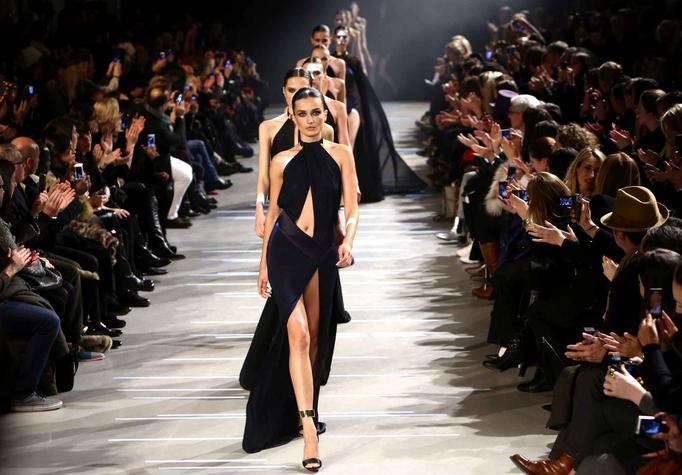Haute couture, the mysterious customers<
From haute couture, the public only perceives the foam: dream dresses which, during a parade, play the leading role in front of cameras around the world.But summarizing haute couture to a show or museum art which demonstrates ageless know-how would be likely to neglect a mysterious and crucial part of this discipline: the customers.Mysterious because they hold their anonymity, and the houses respect this confidentiality by remaining obstinately spent on their identity as on the rest, carefully cultivating the secret when they usually miss an opportunity to communicate.Crucial because the orders they place bring this high luxury micro-industry to life as well as its workshops.
In return, they alone experience concrete haute couture, the one that begins once the dress has known its quarter of an hour of celebrity.The client becomes the center of all attentions and accesses tailor -made services.It all starts with an appointment traditionally made in the sewing salons of houses, muffled and highly private places that keep more from the 5-star hotel than from the shop, if it luxury.In the first half of the 20th century, the golden age of haute couture, the customers went to Paris three or four times a season to engage in the fitting rituals.This seasonal migration distinguished the privileged classes, for whom these journeys constituted an essential step in a perpetual vacation circuit.This lifestyle has disappeared and with it these systematic pilgrimages.
From now on, the houses also go to the clients and transport the salons to them.At Christian Dior, the Haute Couture team goes to New York twice a year, in February and September, to meet the customers.At Chanel, the entire parade can move to the other side of the world.Last year, the spring-summer collection paraded in Tokyo in the presence of its author Karl Lagerfeld.Special meeting sessions were also organized in Shanghai, Hong-Kong, New York and Los Angeles.The glorious tailor-made caravan goes where potential customers live and, for a few years, it has multiplied incursions into the emerging powers, from Brazil to India.During these meetings, the client accesses a rare experience: that of a close and privileged collaboration with the designer and his team.A dialogue is established with the director of haute couture, who makes the link between creatives, workshops and customers.

A case of possibilities
Your questions about [Foundation Repair] - Laura Asks… How to repair cracks in Cinder Block Wall? I have a...http: // tumblr.com/xsc1znnts1
— MsDailyDeal Mon Apr 04 05:00:46 +0000 2011
While the communication services of brands do not hesitate to make their creator a star like any other, they endeavor to preserve the anonymity of this interpreter whose we know nothing except that she embodies theHome style and values.This temple goalkeeper guides the client in her choices.Because sewing is above all a matter of possibilities.Infinite or almost.The clothes are made to the exact measurements of the client, which can also require some variations in style.Only limits - logics: do not distort the creator's work and request technically feasible alterations.At Chanel, length, color or fabric modifications are closely supervised by the workshop manager who ensures compliance with house codes.To preserve the spirit of his collection, Raf Simons, the artistic director of Christian Dior, supervises the special sketches made at the request of the customers.This creative participation, even limited, is also part of the pleasure.The exceptional nature of these parts is also measured in working hours in workshops with elite know-how.
In the magical world of sewing, the figures weigh heavily.For the "birth" of a Valentino haute couture dress, it takes two to three fittings, three to four months for the realization, and a dozen highly qualified workers.At Dior, we devote up to 600 hours to the embroidery of a model.The Chanel Handmand is just as dizzying: a tailor requires 200 hours of meticulous work, a 150 cocktail dress and some fully embroidered wedding dresses up to 800 hours of work.Of course, these talents at work have a price, in accordance with the excellence of the seam: a handmade tailor at Chanel (without embroidery) costs 30,000 euros on average.An addition that does not only cover the price of clothing but also these extraordinary services.On arrival, we guess the quality of the realization but only the one that wears the garment is really aware of it.Far from its overused uses, the real definition of luxury in short.
Carine Bizet
L’espace des contributions est réservé aux abonnés. Abonnez-vous pour accéder à cet espace d’échange et contribuer à la discussion. S’abonner Déjà abonné ? Se connecterSee contributions


 Tags:
Tags: Prev
Prev







